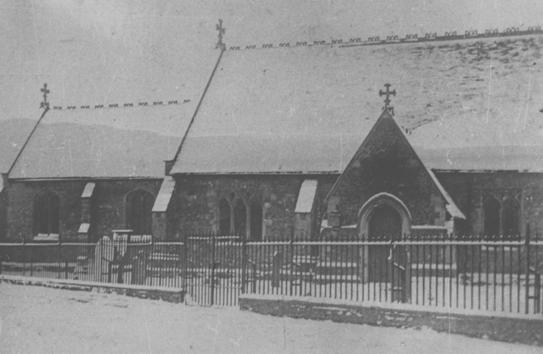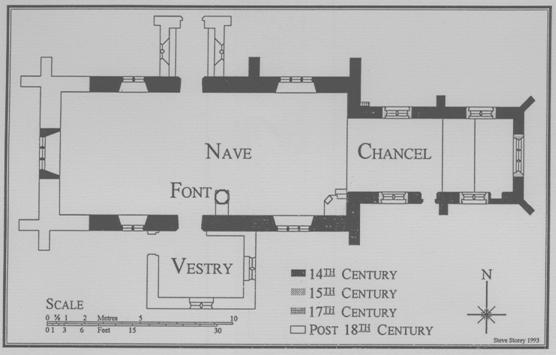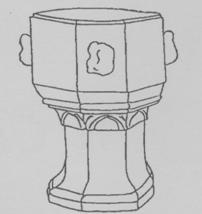|
|
|
| St. George’s Church is part of the Ely Team Ministry. The Team Vicar is Rev. Chris Hill. Services are held each Sunday at 9.30 am. Full details are posted on the notice board in the church yard notice board each month. Details of future events can also be found in the village bi-monthly newsletter. The church is wheel chair accessible and has a hearing loop. |
| The Friends of St George’s |
The Friends is an organization of people who are keen to see that the church is maintained in good repair for the benefit of the village as a whole. They organize regular fund raising events in the church when they welcome visitors to the historic building. They also run a 100 club with 12 draws each year. New members of the Friends are always very welcome. The cost is £5 a year (families £10 and life membership £75).
- Contact Tony Shaw – Telephone number 01353 649 470.
|
|
|
| The church of St. George, Little Thetford, occupies a small site on the south side of Main Street. It consists of chancel, nave, north porch and a south vestry. The material is rubble and the roofs are covered with tiles. The fabric is of 14th Century origin. A century later new windows were inserted in the chancel. There was a drastic restoration in 1863, when the nave was extended and a porch added. The vestry was erected in 1885. Until the 1863 restoration the nave was separated from the chancel by a solid wall with a doorway in the centre and a square squint on either aside, above were three brackets, probably for supporting the rood and its attendant figures. The roofs were thatched.The chancel has an east window of three cinquefoiled lights under a depressed head, with a hood terminating in heads. There are diagonal buttresses with one set – off, and similar buttresses on the north and south between the windows. The lateral fenestration consists of two windows on each side, of two cinquefoiled lights with a quatrefoil above. There is an external base course and beneath the window an internal string, which has been renewed. The two – centered arch is modern. At the north – west angle there is a plain brick buttress, probably of 17th – century date. In the south wall is a plain piscina with a stone credence shelf and a 14th century door just west of the buttress.The nave, which is wider than the chancel, has a large straight angle buttress at the east end of the north and south walls and a similar one in the middle of the north wall. The east gable was rebuilt in brick in 1665, as appears from the date on the external face. The 14th century north-east and south-east windows are of three cinquefoiled lights with a quatrefoil above, under a square head. The north-west and south-west windows are of similar date and design, but of two lights. The west wall, though rebuilt when the nave was extended, retains much of old material and a good 14th century window of three lights with flowing tracery and a hood terminating in masks. The tracery has been renewed. Above are two recesses for bells. There are pairs of straight-angle buttresses, which are modern. The plain north and south doorways are 14th century and have continuous moldings’. There is an external string-course, which has been renewed. |
|
|
| The porch, which is entirely modern, has an outer doorway with roll moldings dying into the chamfered responds and a small two-light window on the east and west with trefoiled heads and a trefoil above. The modern vestry is entered from the nave by the original south doorway, is faced internally with brick and has a modern two-light window in the east and south walls. There is an external doorway to the west.All the roofs are modern.The font is 14th century, about 1350-60. It has been badly damaged and has been repaired probably during the 1863 “facelift”. It has an octagonal bowl and shaft with human faces, all with long hair, projecting from each alternate face of the bowl. The stern of the font has tracery carving. The rest of the font is made up of a sort of concrete and has a large stone step, all set on a circle of stone. The original lead lining of the font is still in place. |
|
|
| The plate consists of a modern chalice and paten of silver and a modern alms-dish. There is one bell, dated 1769, which came from Ely House, London.The registers begin in 1654 and are complete. See digital copy of registers.St Georges was a “Chapel-of-Ease” attached to the Cathedral of Ely – that is to say it was a local small Church for people to “ease” their worship, or to save them the journey to Ely. It ceased to be so in 1600, when it was separated from the Cathedral.There was another older chapel in the village, called Harrimere or Haveringmere or Averingmere that stood on the river bank south-east of Little Thetford. It is now commemorated in the name Chapel Hill and Harrimere Drain.In 1276 Thomas de Wymisse, rector, renounced all claims to the tythes from the lands in the fields of Ely, which were held by the men of Little Thetford. An agreement, about 1523, between Richard Ryssley, rector of Stretham, and Richard Ryplingham and eighteen other householders of Little Thetford, of the other, laid it down that the stipendiary in charge of the Little Thetford chapel should have tythes to the hamlet. The inhabitants were, however, to attend the mother church of Stretham on St. James’s Day (the dedication festival), and burial rights were reserved to Stretham. The minor road and footpath leading south-west from Little Thetford direct to Stretham is still Known as the “Burying Way”. |
| Common names from the Church records |
| Below are the 40 most common names, from the Church Registers of Births, Marriages and Deaths. Church records go back to 1654 in Little Thetford. The first column contains the number of occurrences of the family name shown in the second column.148 Hinkin, Hinkings, Henkin 138 Taylor 120 Murftt 118 Yarrow 113 Dewsbury, Dewsberry 103 Pope 87 Howard 86 Macer, Masor, Marcer 75 Wright, Rite 70 Smith, Smeth 61 Roberts, Robbards 54 Morden, Moden, Moreton 51 Lister, Lester, Lyster 44 Wilkin 44 Merill, Merry, Murill 42 Foot, Futt 42 Frohawk, Frohock(s), Frogge 41 Granger, Gringer 39 Hopkin, Hobkin 39 Creek(e), Creak 37 Money 37 Covell, Coville, Coval, Colvil 35 Hitch, Hich 35 Jarman, Jermin, Jermey, German, Garman 35 Sadler 33 Heading, Headwin(g), Hedden 33 Lightfoot, Lifoot, Ligfote 32 Driver, Drever 31 Bullman 31 Wilby, Wilbye 31 Coteman, Coatman, Cooteman 31 Thompson, Tomson 29 Low(e),Loe, Loo 29 Gray 27 Chapman 25 Dymock, Dimock 25 Farby 23 Green 22 Cross 22 Lythell, Lythal, LithalAll the names are common in the 1993 Cambridge Telephone Directory, except Frowhawk and Farby. |




Recent Comments